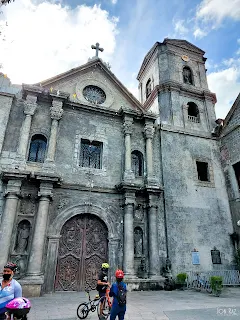San Agustin Church in Manila is a Roman Catholic church lying within the historic walled city of Manila. The oldest stone church in the country was completed by the Spanish colonizers in 1607. Being a part of the area known as "Baroque Churches of the Philippines," it is a UNESCO World Heritage Site owing to its remarkable architecture and historic importance.
It is a mixture of the European Baroque style with that of the local taste, as shown by its detailed carvings, intricate ceiling murals, and the large altars. Centuries of earthquakes, wars, and other perils finally tamed this massive stone structure into a resilient symbol.
Inside, it houses an impressive collection of religious artifacts and centuries-old paintings, as well as the tombs of several Spanish conquistadors, which include Miguel López de Legazpi. Next to the church lies the San Agustin Museum, with more interesting insights into the history of this church and the more general religious and cultural history of the Philippines.
Until today, San Agustin Church remains a frequent site for worship but has become one of the most in-demand venues for weddings and other life events because of its historic presence and significance to both devotees and tourists alike.
Photos Taken: February 2021













